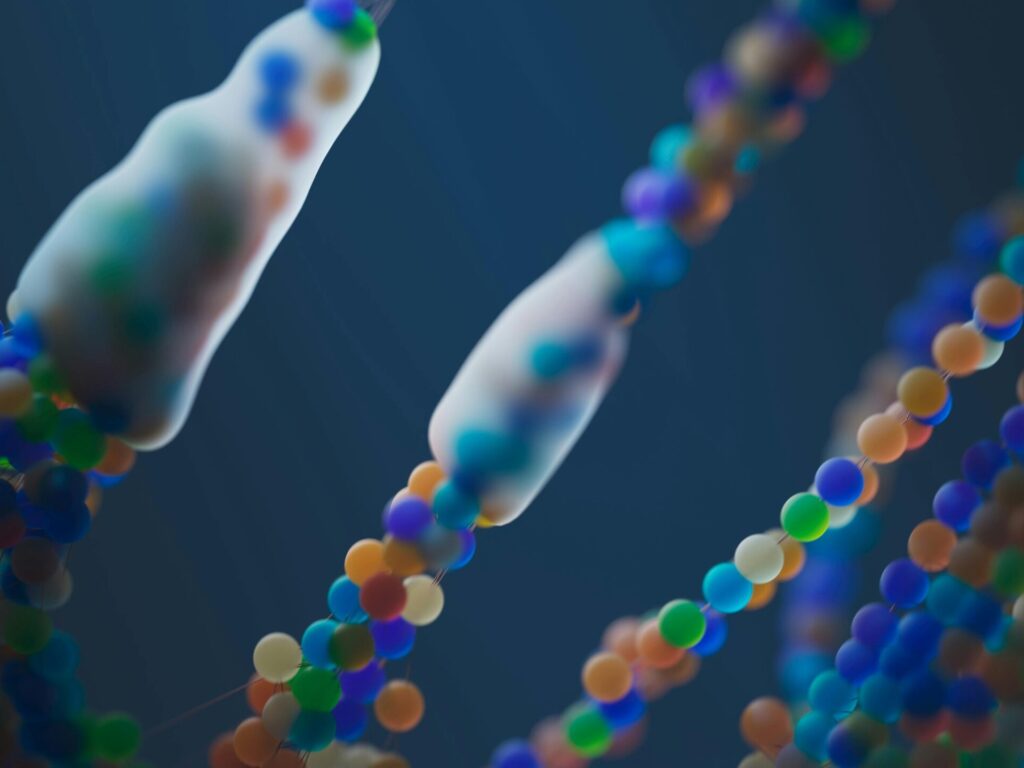Could consciousness depend not only on dynamic activity, but on the plastic constraints that shape which experiences can be had at all?
In living systems, regulation rarely follows a straight line. Instead, it unfolds in loops—recursive, layered, and shaped by prior states. Beneath perception, action, and memory lies an architecture that decides what a system becomes aware of, how it adapts, and how it learns what to ignore. One candidate for this layer is epigenetic regulation.
Often framed as a mechanism for gene expression control, epigenetics may serve a more fundamental role:
Epigenetics may not just regulate expression—it may regulate how regulation itself unfolds. A form of structural memory of suprise.
This perspective intersects with emerging ideas in theoretical neuroscience, particularly those inspired by the Free Energy Principle (FEP). According to this framework, living systems act to reduce prediction error over time—by revising their internal models, adjusting their responses, or altering how signals are weighted. For this inference to remain stable, the regulatory system itself must be tunable.
This is where epigenetics enters the conversation, not as a fixed script, but as a dynamic filter for what can be learned, felt, and integrated.
Recursive Inference and Adaptive Plasticity
Consciousness appears to rely on recursive loops: integrating the past, responding to the present, anticipating the future. These loops require a substrate of plasticity. But plasticity itself must be constrained. Too much flexibility yields chaos; too little leads to rigidity.
Epigenetic mechanisms such as:
Histone modifications
DNA methylation
Non-coding RNAs
may serve to tune the scope and timescale of change that neurons and networks can undergo. They influence which circuits remain open to novelty, and which consolidate into structure.
This tuning may not be arbitrary. Over time, epigenetic signatures might encode where surprise occurred and mattered. They could help filter which future prediction errors are worth responding to, and which are ignored as noise.
Feeling as Structured Entropy
Some models suggest that feeling, the tone or urgency of conscious experience, emerges from how a system tracks its internal physiological state in relation to expected setpoints. These interoceptive signals are not simply raw data; they are interpreted within hierarchies of expectation.
Epigenetics influences:
Neuroimmune tone
Neurotransmitter sensitivity
Hormonal and stress responsiveness
These systems determine how bodily states feel, and how they are prioritized in awareness. If physiological surprise triggers regulatory responses, then epigenetic mechanisms may influence which bodily deviations are felt, and how they are emotionally colored.
Time, Memory, and the Self
Consciousness is deeply temporal. It stitches events into continuity, creating identity, coherence, and narrative. Epigenetic plasticity may underlie this temporal depth by encoding past perturbations, storing regulatory memory in chromatin landscapes.
The “self” may not just persist in thought. It may persist through epigenetically stabilized priors, accumulated across time.
This implies that autobiographical memory, affective resonance, and the continuity of personal identity may all depend on the flexibility and persistence of molecular adaptation.
Epigenetics and the Conscious Loop
Epigenetic mechanisms may shape consciousness not by producing it directly, but by tuning the conditions under which it emerges—governing plasticity, continuity, salience, and stability. Several interrelated functions illustrate how this regulatory architecture might scaffold conscious awareness.
Plasticity tuning
forms the basis for learning. Through processes like histone acetylation and DNA methylation, epigenetics controls access to genes involved in synaptic remodeling such as BDNF and CREB, which underlie long-term potentiation and circuit flexibility. This gating determines which neural pathways remain receptive to change, influencing attention, memory, and how quickly the system can update in the face of novel inputs. If plasticity is overconstrained, consciousness may become rigid and repetitive; if underconstrained, disorganized or hypersensitive.
Temporal integration
is enabled by the persistence of epigenetic marks across time. Methylation signatures can encode the molecular memory of stress, salience, or behavioral relevance. These long-term adaptations influence how new experiences are processed in context, helping to stabilize narrative continuity and causal coherence. Without this molecular scaffolding, the flow of time in consciousness might fragment, impacting autobiographical memory, identity, and the perception of meaning.
Interoceptive filtering
involves how the body’s internal signals are selected, weighted, and felt. Epigenetic modifications to cytokine expression, ion channel activity, and receptor sensitivity (such as for cortisol or oxytocin) can shift how strongly the system reacts to internal deviations. This tuning affects whether physiological signals are consciously perceived as discomfort, urgency, safety, or calm. In this way, epigenetics may help regulate the emotional texture of experience — what gets felt, and how it feels.
Identity stabilization
emerges from the regional maintenance of consistent gene expression patterns in the brain. Epigenetics supports neuronal identity and the long-term architecture of connectivity, which helps preserve individual traits and cognitive tendencies. This may allow the self to persist, not as a static entity, but as a reliably structured system of expectations, priorities, and sensory orientation. Changes in this layer may underlie identity shifts during trauma, development, or deep learning.
Energy optimization
reflects the epigenetic regulation of metabolic efficiency. Transcriptional activity is energy-intensive, and by silencing irrelevant genomic regions, the epigenome helps conserve ATP and reduce unnecessary neural noise. This selective sparing improves perceptual clarity and attentional focus, contributing to what might be described as the energetic precision of consciousness, doing more with less, and doing it cleanly.
Precision modulation
may be one of the most cognitively relevant functions. Conscious inference depends not just on prediction, but on knowing how much to trust each signal. Epigenetic modifications—through their influence on receptor density, feedback sensitivity, and transcriptional reactivity—may help calibrate this internal confidence. They could affect how strongly a system “believes” its own priors, thereby adjusting the weight of sensory evidence in perception and thought. This modulation may underpin how we distinguish clarity from confusion, certainty from doubt.
Together, these six dimensions suggest that epigenetics may not just support consciousness, but structure its internal style—how it feels, how it flows, and how it learns. Consciousness, in this light, is not only a result of neural activity, but of how that activity is historically shaped, energetically constrained, and probabilistically interpreted through a deep molecular memory of surprise.
A Question of Cellular Consciousness
Every brain cell appears to possess the molecular machinery for epigenetic modification, a localized memory of prior experience, sensitivity to metabolic flux, and capacity for transcriptional adaptation. If this is true, then epigenetic regulation may serve as a cell-intrinsic mechanism of readiness: a way each neuron prepares itself for future signaling, plasticity, or stability.
This raises a compelling but unresolved question:
If each cell can adaptively tune its own responsiveness to surprise, does it possess a fragment of what might be called consciousness?
This idea does not easily align with hierarchical models like Friston’s, which view consciousness as emerging from distributed, system-level integration of prediction errors, rather than local inference. And yet, if epigenetic plasticity governs which perturbations a cell considers relevant, then each cell may contribute, indirectly but meaningfully, to the larger field of conscious readiness.
Final Reflection
Epigenetic mechanisms may not merely orchestrate gene expression. They may act as recursive scaffolds, shaping the rules by which biological systems adapt, specialize, and maintain internal coherence across time.
This view adds depth to traditional models of adaptation. It suggests that biological intelligence arises not solely from action or perception, but from how well a system regulates the act of regulation itself. And when it comes to consciousness, this recursive control may define its very structure.
Epigenetics may not generate conscious awareness outright. But it may determine how much depth, plasticity, and integration that awareness can afford. In this light, the epigenome becomes more than a molecular toolkit. It becomes a regulator of readiness, shaping which signals are amplified, which feelings emerge, which narratives cohere, and which uncertainties are allowed to enter the field of awareness.
Surprise may be what makes consciousness necessary.
Epigenetics may be how surprise becomes structure.
Efficiency, adaptability, identity, and even the shape of feeling itself may all be downstream of this recursive architecture: A system where energy, error, and inference spiral inward, until surprise becomes prediction, and prediction becomes life.
References
Friston, K. (2025). Can a single brain cell be surprised? Nature Communications. DOI
Ramstead, M. J. D., et al. (2018). Free-energy formulation of life. Physics of Life Reviews, 24, 1–16.
Allen, M., & Friston, K. J. (2018). From cognitivism to autopoiesis: Towards a computational framework for the embodied mind. Synthese, 195(6), 2459–2482.
Pezzulo, G., & Levin, M. (2016). Top-down models in biology. Journal of the Royal Society Interface, 13(120).
Folguera-Blasco, N., et al. (2018). Prediction error and epigenetic remodeling. PLoS Computational Biology, 14(12), e1006052.




